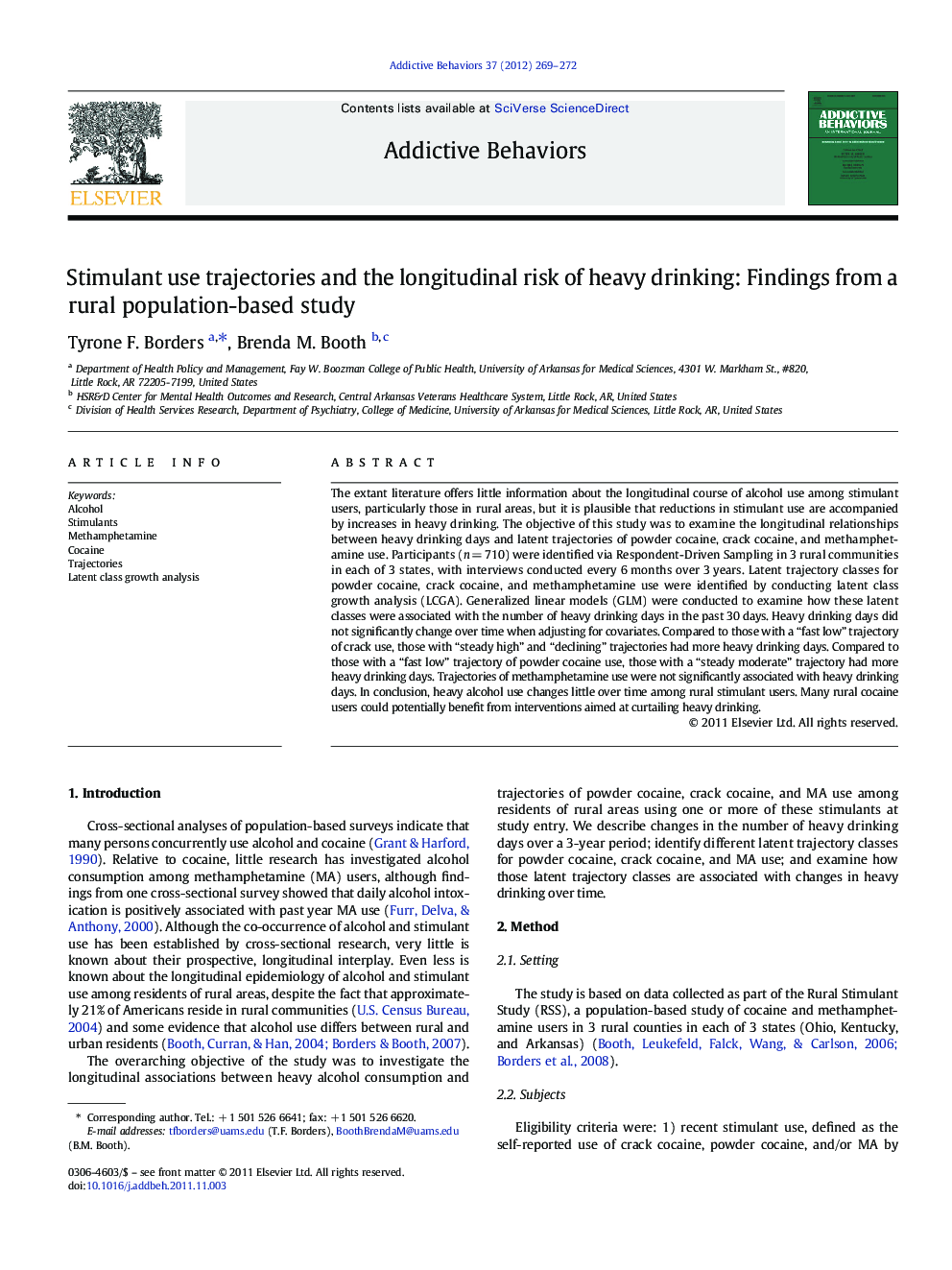| Article ID | Journal | Published Year | Pages | File Type |
|---|---|---|---|---|
| 899274 | Addictive Behaviors | 2012 | 4 Pages |
The extant literature offers little information about the longitudinal course of alcohol use among stimulant users, particularly those in rural areas, but it is plausible that reductions in stimulant use are accompanied by increases in heavy drinking. The objective of this study was to examine the longitudinal relationships between heavy drinking days and latent trajectories of powder cocaine, crack cocaine, and methamphetamine use. Participants (n = 710) were identified via Respondent-Driven Sampling in 3 rural communities in each of 3 states, with interviews conducted every 6 months over 3 years. Latent trajectory classes for powder cocaine, crack cocaine, and methamphetamine use were identified by conducting latent class growth analysis (LCGA). Generalized linear models (GLM) were conducted to examine how these latent classes were associated with the number of heavy drinking days in the past 30 days. Heavy drinking days did not significantly change over time when adjusting for covariates. Compared to those with a “fast low” trajectory of crack use, those with “steady high” and “declining” trajectories had more heavy drinking days. Compared to those with a “fast low” trajectory of powder cocaine use, those with a “steady moderate” trajectory had more heavy drinking days. Trajectories of methamphetamine use were not significantly associated with heavy drinking days. In conclusion, heavy alcohol use changes little over time among rural stimulant users. Many rural cocaine users could potentially benefit from interventions aimed at curtailing heavy drinking.
► On average, heavy drinking does not change over time among rural stimulant users. ► Particular trajectories of cocaine use are associated with heavy drinking. ► Many rural cocaine users may benefit from interventions to curtail heavy drinking.
